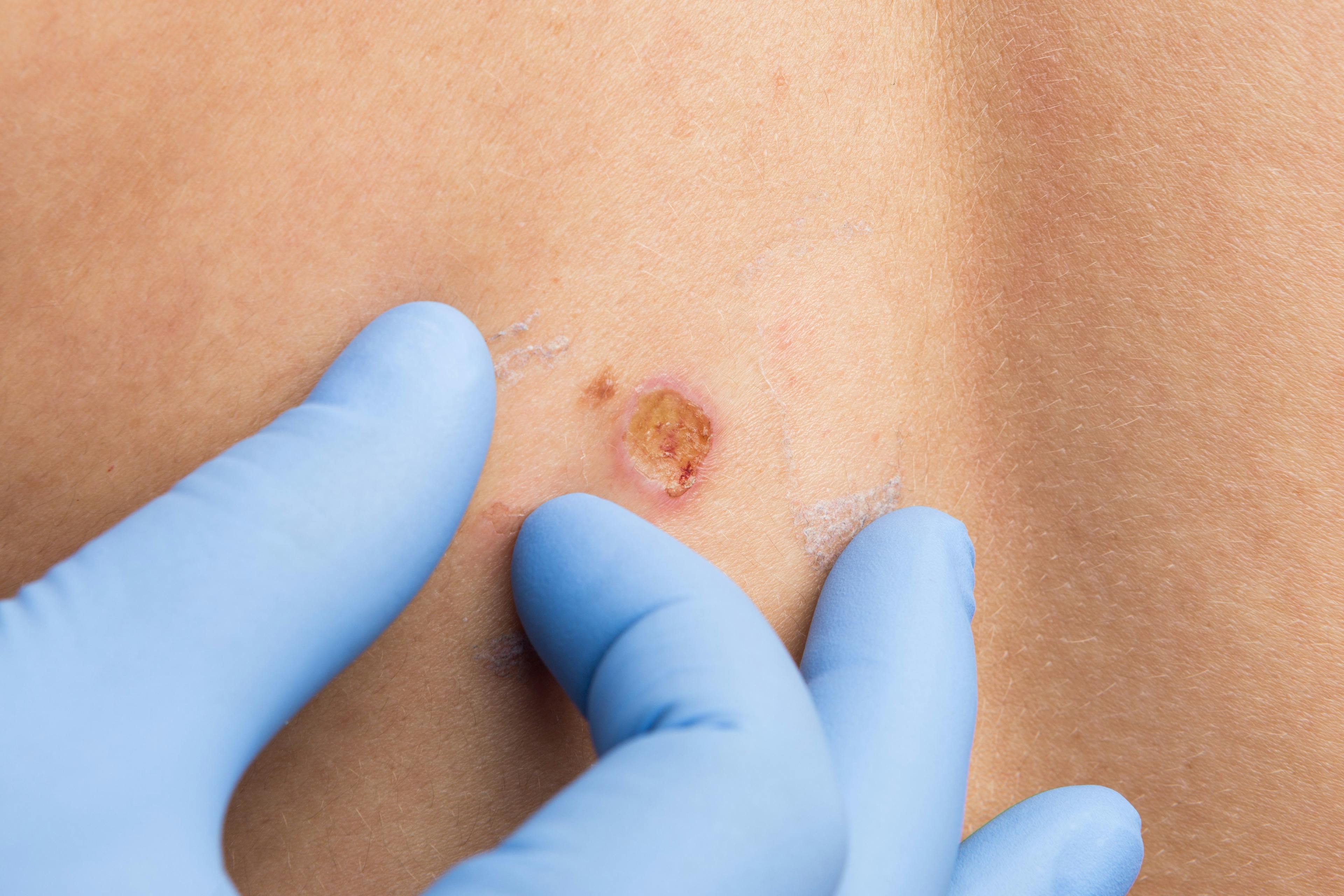- Acne
- Actinic Keratosis
- Aesthetics
- Alopecia
- Atopic Dermatitis
- Buy-and-Bill
- COVID-19
- Case-Based Roundtable
- Chronic Hand Eczema
- Drug Watch
- Eczema
- General Dermatology
- Hidradenitis Suppurativa
- Melasma
- NP and PA
- Pediatric Dermatology
- Pigmentary Disorders
- Practice Management
- Precision Medicine and Biologics
- Prurigo Nodularis
- Psoriasis
- Psoriatic Arthritis
- Rare Disease
- Rosacea
- Skin Cancer
- Vitiligo
- Wound Care
Publication
Article
Dermatology Times
Biologics vs JAKs for Atopic Dermatitis: The Great Debate
Author(s):
Alexandra Golant, MD, and Seemal Desai, MD, weigh the pros and cons of each treatment option for atopic dermatitis, considering mechanism of action, efficacy, and safety. Which will emerge victorious?
When confronted with a patient seeking swift relief from atopic dermatitis (AD), which should you reach for first as a clinician—a biologic such as dupilumab or a Janus kinase (JAK) inhibitor like upadacitinib?
Alexandra Golant, MD, and Seemal Desai, MD, went head-to-head in a presentation at Winter Clinical Miami, held February 17-20, 2023, in Miami, Florida, to debate this very question.1 Golant, medical director of the Dermatology Faculty Practice and the program director of the Dermatology Residency Program at Mount Sinai in New York, New York, presented the case for biologics, while Desai, clinical assistant professor of dermatology at the University of Texas Southwest Medical Center in Dallas, Texas, went to bat for JAK inhibitors.
The match began with a typical case: A 28-year-old male with severe AD since childhood presents in clinic. Topical treatments, both steroidal and non-steroidal, have failed to clear his skin, as did a short course of narrowband ultraviolet-B phototherapy. He achieved good short-term response to oral corticosteroid treatment but experienced severe flares after the course. Itch is the main symptom of concern and AD has affected both the patient’s work and personal life. What are his options, and how should clinicians approach this case?
The first step in evaluating systemic therapeutics is to think about where the therapies work, or the mechanism of action (MOA).
“Biologics are all monoclonal antibodies that are going to work extracellularly by inhibiting the binding of 1 or more cytokines, either by binding the cytokine or receptor,” Golant told the audience. “In contrast to that, and this is really the key difference when it comes to mechanism of action, our JAK inhibitors are small molecule inhibitors that work at this level of the intracellular junction and prevent that signal transduction into the nucleus of these cytokines.”
Golant’s talk included 2 biologics approved for AD—dupilumab and tralokinumab— as well as one soon-to-be approved biologic, lebrikizumab. Dupilumab inhibits both IL-4 and IL-13, while tralokinumab and lebrikizumab are both IL-13 inhibitors.
Desai, meanwhile, covered JAKs like upadacitinib, abrocitinib, and ruxolitinib, explaining further that “the MOA of JAK inhibitors is so intuitive based on this small intracellular pathway…we talked about that dysfunctional husband and wife couple pair— JAK 1 and 2, JAK 1 and 3, JAK 2 and tyrosine kinase (TYK) 1, JAK 2 and JAK 3—all of them work via different cytokines.”
In thinking about the acute itch, burn, scratch cycle, the key symptom of concern for patients is often itch, Desai pointed out.
“The itch drives so much of what is going on. IL-4, IL-13, IL-31, IL-33, and one called TSLP— even though there are lots of different cytokines in the atopic dermatitis pathway, these tend to be the key cytokines that modulate the inflammation and the pathophysiology,” he said
JAKs can shut down that itch and inflammation without clinicians having to worry about the cytokines; simply select the JAK that blocks the JAK pathway and “you’re covering your bases from an intracellular perspective,” Desai concluded.
Golant countered Desai by asking, “Why turn off the signal so broadly when you can target the key Th2 cytokines that are really driving a lot of our pathophysiology of this disease?”
Moving on to an efficacy discussion, Golant first called out dupilumab, a “highly efficacious medication” that now has 6 years’ worth of real-world data post-approval and has demonstrated efficacy not only in adults, but in adolescents and children as young as 6 months.
Tralokinumab targets just IL-13 and demonstrated high levels of efficacy compared with placebo in clinical trials. Additionally, in the open-label extension ECZTEND trial (NCT03587805), patients treated with tralokinumab maintained their response nicely at 56 weeks, similar to dupilumab.
Lebrikizumab, which also targets IL-13, is up for FDA approval2 for the treatment of patients with AD. Initial 16-week data were strong and recent long-term extension data show maintenance of response out to 52 weeks. Golant also pointed out that the data appear to support maintenance of response with dosing every 4 weeks in addition to every 2.
The upside of JAKs, for some, is convenience of administration, Desai said. Biologics are administered as injections whereas the JAKs are oral medications taken either once or twice daily depending on the drug. They also effectively tackle that key symptom of itch. In looking at the itch response for upadacitinib from its phase 3 trials (MEASURE UP 1 [NCT03569293] and AD UP [NCT03568318]), 67% of patients achieved the secondary end point of a reduction of ≥ 4 points from baseline in Worst Pruritus Numerical Rating Scale at week 4, and 60% at week 16.
In the JADE MONO-1 and -2 trials (NCT03349060 and NCT03575871) for abrocitinib, patients demonstrated IGA responses and rapid reduction and improvement in both Eczema Area and Severity Index scores and body surface area involvement scores. JAKs also take effect quickly, Desai explained, which is helpful for that patient who is red, itchy, and miserable.
Moving on to safety, which is likely the key point to debate between biologics and JAKs, Golant began by pointing out that biologics are very easy to counsel patients on. Long-term safety data show that injection site reactions and slightly increased rates of conjunctivitis or ocular symptoms are the most common when it comes to treatment-emergent adverse events.
JAKs automatically tend to get a bit more scrutiny because of the black box warnings,3 but Desai urged colleagues not to be afraid to have the conversation with their patients.
“The bottom line is, do you need to check labs? Yes. Do you need to monitor and counsel these patients? Yes. Are we as dermatologists used to doing that for prescribing methotrexate, cyclosporine, mycophenolic, azathioprine? Yes,” he said. “This is not something that's going to be unique or different for any of us in that realm. I think it's important to have the discussion, but it's also important to level-set and not be afraid of using therapies that can be really life-changing for our patients.”
In conclusion, Golant and Desai agreed that both classes of medications represent incredible advances in dermatology and should be presented together as options for patients.
“It really is where the art comes to medicine in terms of how you make these decisions,” Golant said.
References:
- Golant A, Desai S. What to use for atopic dermatitis? Biologics vs JAKs. Presented at Winter Clinical Miami 2023; February 17-20, 2023; Miami, FL.
- Bader K. Eli Lilly submits BLA for lebrikizumab AD treatment. Dermatology Times. Published November 9, 2022. Accessed February 18, 2023. https://www.dermatologytimes.com/view/eli-lilly-submits-bla-for-lebrikizumab-ad-treatment
- Petronelli M. FDA requiring black box warning for certain JAK inhibitors. Dermatology Times. Published September 2, 2021. Accessed February 18, 2023. https://www.dermatologytimes.com/view/fda-requiring-black-box-warning-for-certain-jak-inhibitors

Newsletter
Like what you’re reading? Subscribe to Dermatology Times for weekly updates on therapies, innovations, and real-world practice tips.





























